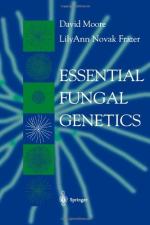|
This section contains 1,873 words (approx. 7 pages at 300 words per page) |

|
 Stinkhorn, Dictyophora indusiata, whose greenish-gray fetid-smelling spore mass and skirtlike indusium are both attractants for insects.
Stinkhorn, Dictyophora indusiata, whose greenish-gray fetid-smelling spore mass and skirtlike indusium are both attractants for insects.
Mycology is the study of fungi (mykes, Greek for "fungi," and ology, meaning "study of"). Most contemporary mycologists consider the fungi to be in two kingdoms: kingdom Fungi with five phyla and kingdom Stramenopila with three phyla. The total number of fungi in the world is estimated to be over 1.5 million with less than 5 percent of the species described. Some mycologists believe that the total number of fungi may be more than 2 million. Two other kingdoms are sometimes mistaken for fungi: the slime molds (kingdom Myxomycota), which have a creeping plasmodium, and the bacteria and actinomycetes (kingdom Monera).
Structure and Life Cycle
Fungi are nonphotosynthetic, lacking the chlorophyll of higher plants and algae, and are recognized by their fruiting bodies, which is the visible part of the fungus. Examples include mushrooms, puffballs...
|
This section contains 1,873 words (approx. 7 pages at 300 words per page) |

|


